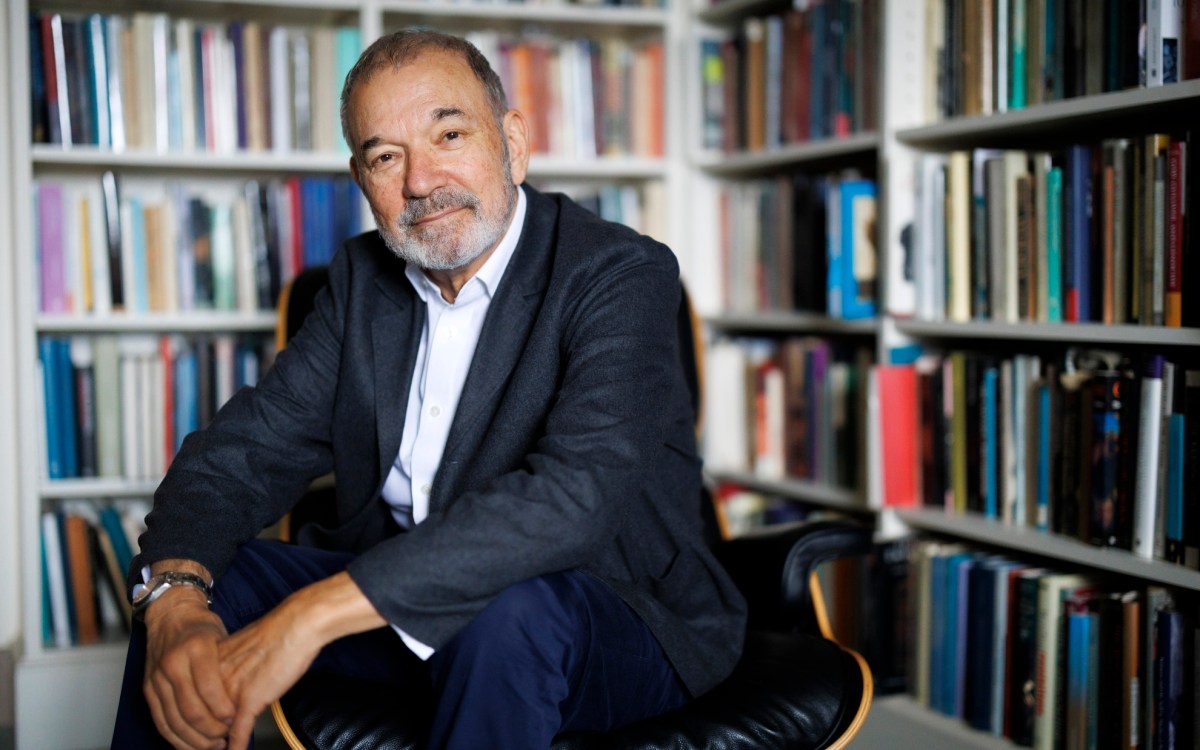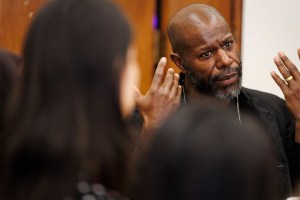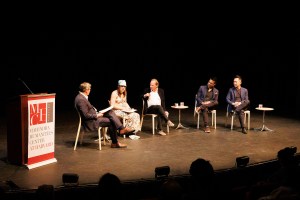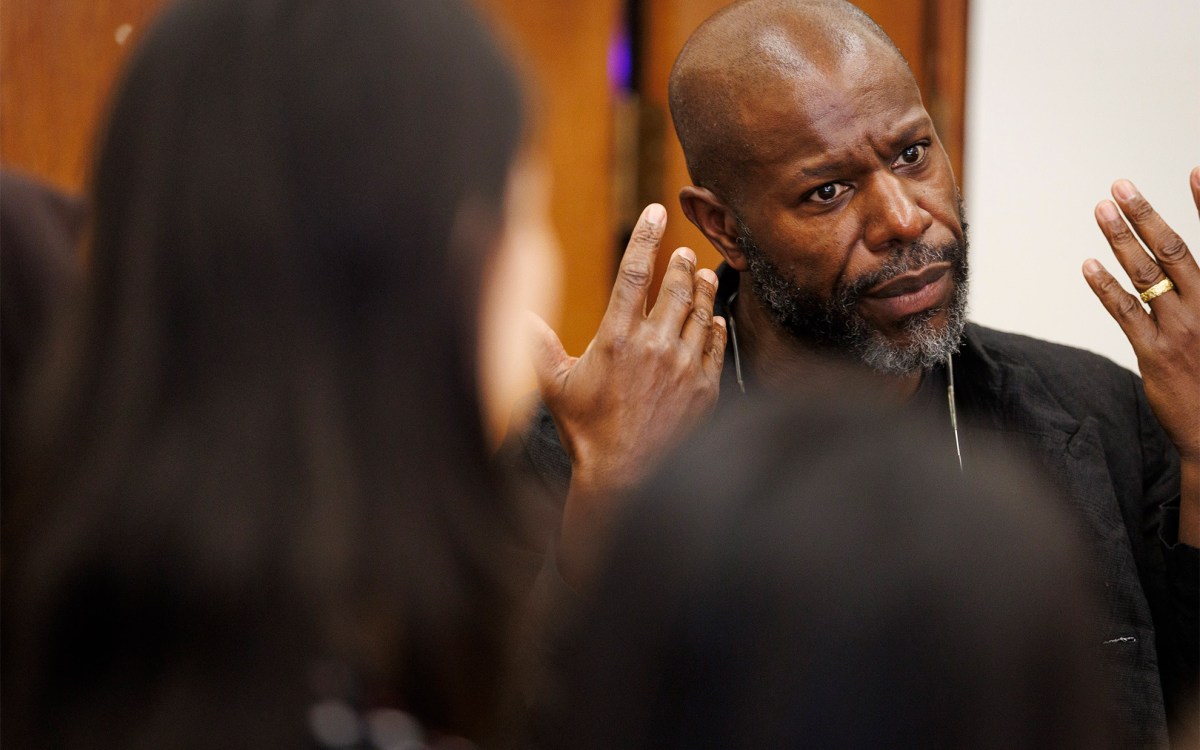
The Fisk Organ in the Appleton Chapel is being replaced in part to open up the space and reveal a window in the chapel that has been obscured for years. Organist Edward Jones is pictured here playing the organ. The organ was built in 1967 by a Harvard Physicist.
File Stephanie Mitchell/Harvard Staff Photographer
The last notes
Appleton Chapel’s Fisk organ, slated for replacing, is centerpiece of final concert
At 9:11 Tuesday morning in tiny Appleton Chapel, organist Edward E. Jones played the final notes of a Bach prelude. The capacity crowd rose in a standing ovation.
The applause was as much for the Fisk Opus 46 organ as it was for Jones, who is the Gund University Organist and Choirmaster in the Memorial Church. The towering instrument, in place since 1967, is being dismantled, and within a week will be shipped to a new Presbyterian church in Austin, Texas.
It is the first step in a two-year, donor-funded $6 million renovation effort. By fall, a 1929 Skinner Organ Co. instrument will grace Appleton, which is in the chancel of the church. By Easter 2012, a new custom-built Fisk organ will be in place in the second-floor rear gallery.
For the record, the last piece played on Appleton’s Fisk organ was Bach’s “Prelude and Fugue in C Major, BWV 545.” It was, said Jones afterward, a favorite of Charles B. Fisk ’49, whose Gloucester, Mass., C.B. Fisk Inc. designed and built the instrument.
And for the record too, Morning Prayers — the traditional 15-minute service at Appleton during the school year — never go beyond 9 a.m.
What was it like to hit that last note? Said Jones, “I’m glad I got it right.”
The night before (May 3), about 400 people gathered at the Memorial Church for the sixth and final C.B. Fisk Op. 46 Celebration Series of organ recitals and master classes. The series was presented in memory of the late John Raymond Ferris, who was Harvard’s University organist and choirmaster from 1958 to 1990.
“This is farewell,” said Peter J. Gomes, the Plummer Professor of Christian Morals and Pusey Minister in the Memorial Church, before the first note was played. “This is it. So enjoy it with all your passion and with all the imagination you can muster.”
Playing the final 7:30 p.m. recital was Christian Lane, an Eastman School-trained rising star in the organ world. He has been Harvard’s assistant University organist and choirmaster since 2008.
The audience watched Lane — playing alone in the chapel — on a video screen. It offered a side view of the performer, who wore a conservative dark suit. He played the keys with demonstrative flourish, and his feet glided over the pedals like a dancer.
The 10-piece program included work by Schumann and Shearing, as well as the world premiere of “Gloucester Estampie” by Carson Cooman ’04, composer-in-residence in the Memorial Church.
Fittingly, the last piece in the program was composed by John Knowles Paine (1839-1906), Harvard’s first professor of music and the University’s first organist and choirmaster.
“Concert Variations on the ‘Star Spangled Banner,’ Op. 4” ranged from the straight to the playful to the mournful. But the final variation was grand, full, and uplifting, like the occasion itself. After the final lingering note, at 9:02 p.m., there was a two-minute standing ovation.
At the back of the crowded church, someone said, “The audience always has the last word.”
Fisk Organ Gallery Stephanie Mitchell / Harvard Staff Photographer
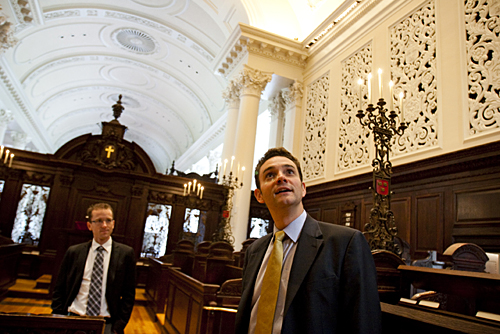
Appleton assessment
After 43 years, the iconic Fisk organ in the Memorial Church’s Appleton Chapel – built by Harvard graduate Charles Brenton Fisk – will be replaced by two new instruments better suited to the building’s acoustic and musical needs. Christian Lane (left), assistant University organist and choirmaster, and Edward Jones, Gund University Organist and Choirmaster at the Memorial Church, survey the Fisk organ in the church’s Appleton Chapel.
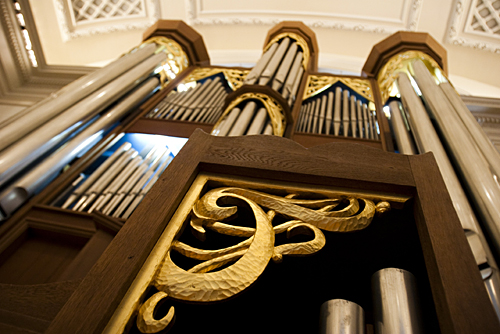
Two organs in place of one
Decorative scrollwork adorns the front of the Fisk organ in Appleton Chapel. The instrument, created by Harvard-educated physicist Charles Brenton Fisk, will be replaced by an electro-pneumatic Skinner organ in the fall. In addition, a new, custom-made Fisk organ will be installed in the church’s rear gallery in 2012.
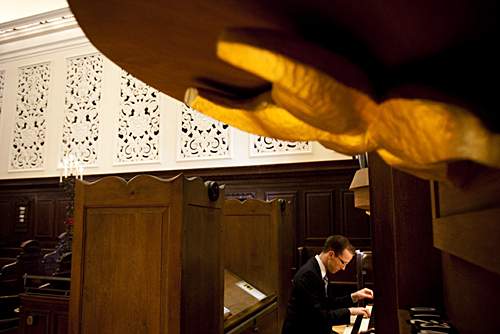
Tickling the keys
Lane plays the Fisk organ in Appleton Chapel.
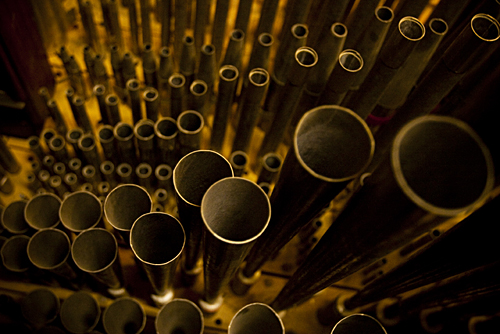
A complex process
Each of the Fisk’s more than 4,500 pipes will be individually removed, wrapped, and placed into separate boxes this spring in preparation for shipment to the organ’s new home, a Presbyterian church in Austin, Texas.
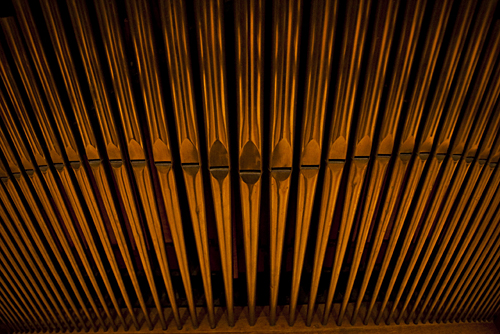
A complex process
Each of the Fisk’s more than 4,500 pipes will be individually removed, wrapped, and placed into separate boxes this spring in preparation for shipment to the organ’s new home, a Presbyterian church in Austin, Texas.
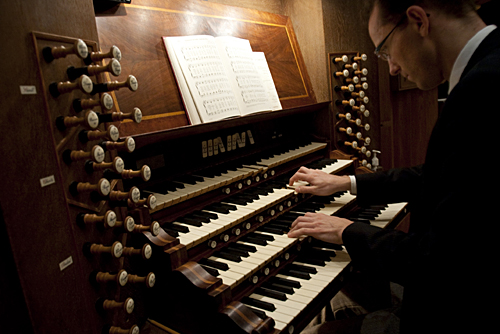
Key concentration
Lane takes a turn at the organ’s console.
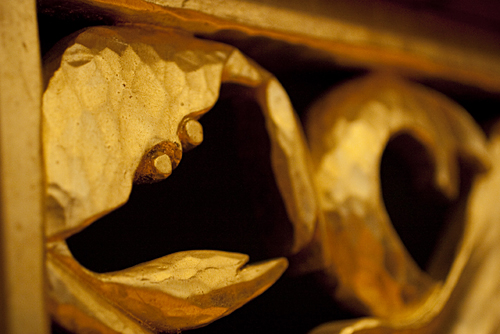
Ode to the ocean
A little golden crab occupies a corner of the Fisk’s facade, a decorative nod to the Gloucester, Mass., organ company’s proximity to the sea.
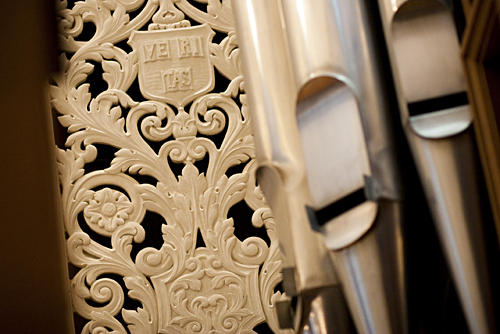
Hidden compartments
Elaborate white grills camouflage several empty spaces on either side of Appleton Chapel. They were created in 1932 for the church’s first organ, an electro-pneumatic Æolian-Skinner.
